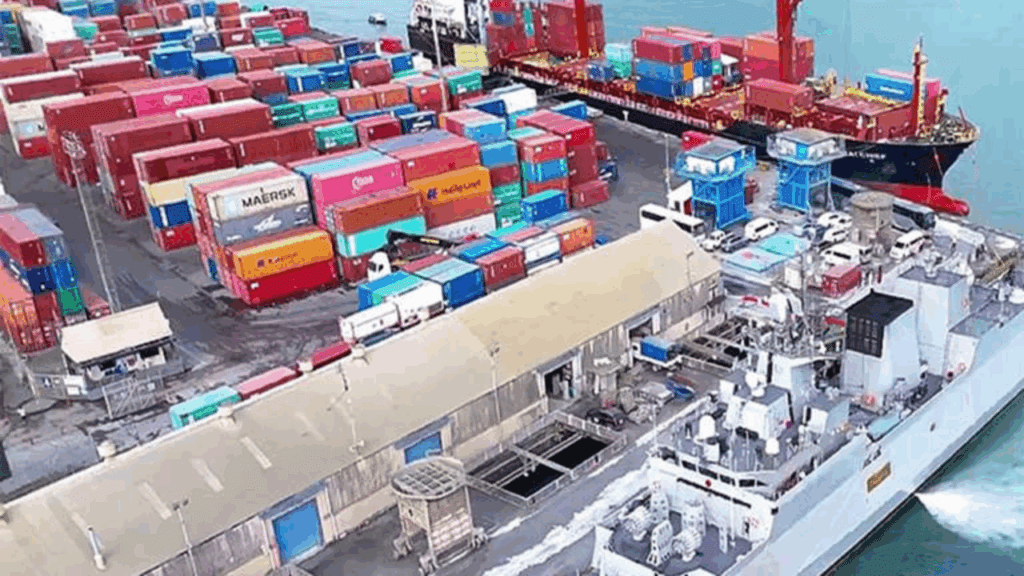The news that India’s exports to the United States fell by 9% in October has sent ripples through economic and policy circles. This sharp decline has been directly linked to the return of Trump-era tariffs, a policy shift that once again placed pressure on several key Indian industries.
For a country where the US remains its largest trading partner, this drop is more than just a monthly statistic—it reflects deeper challenges in global trade dynamics, shifting geopolitical alliances, and rising competition from other emerging economies.The abrupt nature of the decline has raised important questions: Why did this happen now? Which sectors were hit the hardest?
How will Indian businesses cope? And most importantly, what does this mean for the future of India–US trade relations? As the global economy continues to navigate uncertainty, tariff fluctuations act as a reminder of how interconnected—and fragile—the global supply chain truly is.
In this article, we’ll break down the reasons behind the fall, examine its ripple effects across industries, explore strategic responses from both governments, and look ahead to the long-term implications. By the end, you’ll have a complete understanding of why this 9% drop matters far more than it seems on paper, and what it could mean for India’s export economy in the months to come.
Understanding the 9% Decline in India’s US Exports

A 9% fall in exports within a single month is not a small dip—it’s a loud economic alarm bell. This decline isn’t just the result of weaker demand or seasonal fluctuations; it’s driven primarily by a sudden change in trade policy. When tariffs rise abruptly, export orders slow down, buyers pause new contracts, and the cost of doing business skyrockets. That’s exactly what Indian exporters faced in October.
Since the US is India’s single largest export destination, even a small policy shift can create a significant impact. The moment the Trump administration reinstated certain tariff measures, the effect was immediate. Exporters, especially those dealing in price-sensitive sectors like textiles, engineering goods, and pharmaceuticals, found themselves at a disadvantage. Many American buyers, already battling inflation and uncertain consumer sentiment, chose to cut down on new purchase orders, delay shipments, or shift to cheaper suppliers in countries that weren’t hit by the tariffs.
The decline also reflects a confidence gap. When tariffs are unpredictable, businesses hesitate. Importers don’t want to commit to large orders when they fear the next announcement may increase costs even further. Indian exporters, on their side, begin to worry whether their products will remain competitive or if they should start diversifying away from the US market. This lack of clarity results in fewer shipments, canceled orders, and shrinking profit margins.
Another factor behind the 9% drop is logistical challenges. With tariffs back in place, paperwork increases, compliance rules get stricter, and shipping delays become more frequent. All of this slows down India’s export engine. In sectors where India previously enjoyed a competitive edge due to low manufacturing costs, the new tariffs have leveled the playing field—making countries like Mexico, Vietnam, and Bangladesh more appealing to US importers.
What Triggered the Sudden Drop?
The sudden drop in India’s export numbers isn’t random—it was triggered by the reactivation of Trump-era tariff policies. These tariffs were originally imposed during Trump’s first term as part of his aggressive “America First” strategy, aimed at reshoring manufacturing and reducing trade deficits. While some tariffs remained dormant or were selectively applied during the Biden administration, Trump’s return to office brought a renewed push for protectionism.
In early October, the Trump administration announced a fresh round of tariff expansions targeting several countries, including India. These tariffs specifically targeted sectors where the US believed foreign competition was hurting domestic manufacturers. For India, this included textiles, auto parts, electronics, pharmaceuticals, and steel-related goods.
The announcement alone was enough to cause panic among US buyers. Many halted ongoing orders, fearing increased import costs. Meanwhile, Indian exporters rushed to reassess pricing, renegotiate contracts, or— in some cases—suspend shipments altogether until there was clarity. When tariffs come suddenly, the time gap between announcement and implementation is too short for exporters to prepare. As a result, shipments scheduled for October were hit the hardest.
Another trigger was the shifting political narrative in the US. Trump’s new administration is emphasizing American jobs, manufacturing revival, and protectionist trade strategies. This immediately influences US importers’ behavior. Retail chains, wholesalers, and manufacturers who rely on Indian products began diversifying their supply bases to minimize tariff exposure.
A Quick Recap of Trump’s Tariff Policies
To understand why India’s exports suffered in October, it’s important to revisit the foundation of Trump’s tariff policies. During his first term, Donald Trump embraced an aggressive protectionist approach, rooted in the belief that America had been taken advantage of in global trade for decades. His administration argued that foreign manufacturers were benefiting from unfair trade practices, cheap labor, and government subsidies—leaving American factories struggling to compete.
How These Tariffs Resurfaced in 2025
The reactivation of tariffs in 2025 wasn’t sudden—it was a strategic move aligned with Trump’s broader economic agenda. After returning to office, the administration highlighted two key objectives: reviving American manufacturing and reducing dependence on foreign supplies in critical sectors. This narrative fit perfectly into Trump’s existing political brand, and reinstating tariffs became one of the quickest ways to demonstrate action.
The resurfacing began with a review of existing trade agreements. India was placed under scrutiny for its growing trade surplus with the US, which had crossed $50 billion. Although this growth was largely due to increased demand from American companies, the Trump administration viewed it as an imbalance that needed correction. Within weeks, the administration reintroduced duties on specific product categories and expanded others, citing unfair pricing and market access barriers in India.
Read Also: Indian Oil Companies Secure Their First-Ever Deal to Import U.S. LPG Into India







Leave a Comment